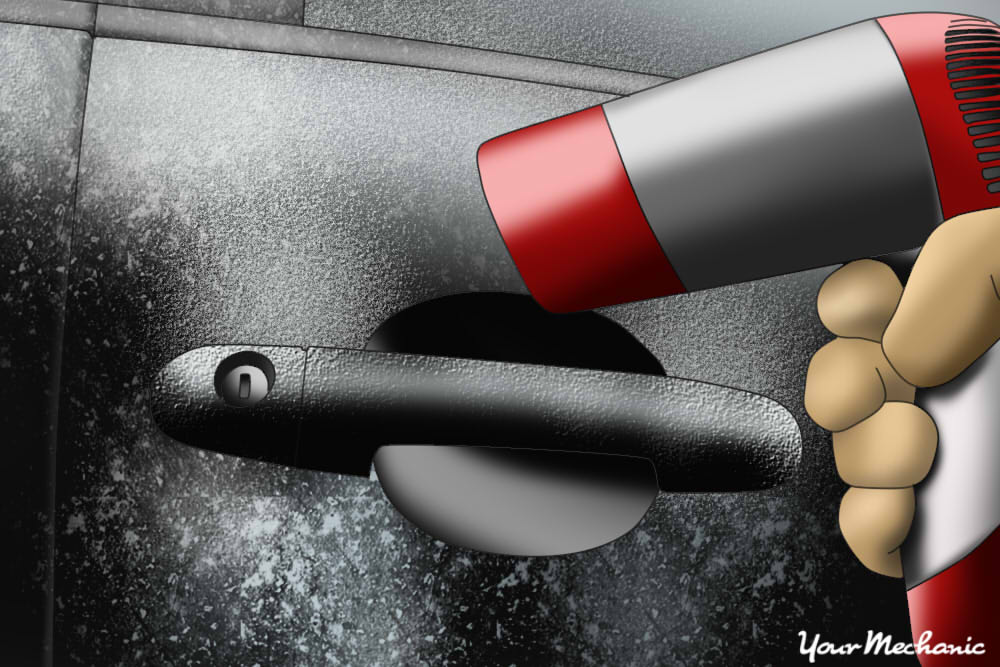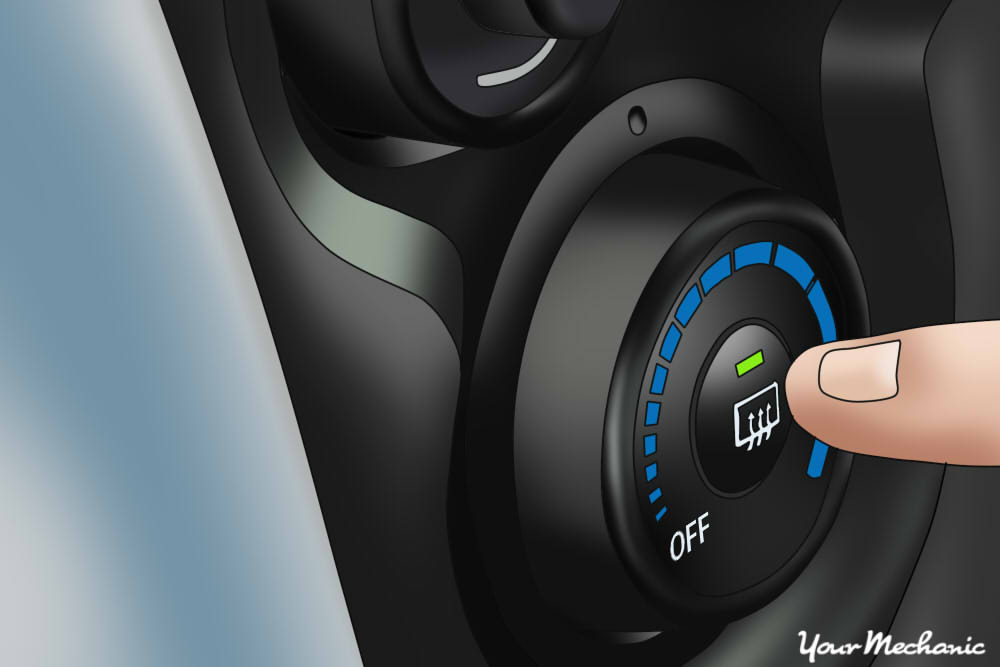

It’s no secret that ice is not fun to drive on. It can make it hard to steer your vehicle, and even harder to stop it. But the tarmac isn’t the only place that ice is a hindrance for cars. Snow and ice that is on your vehicle can be a total pain; it can make it hard to get into your car, and impossible to see out of the windshield.
When the weather conditions are adverse, it’s especially important that you take every safety precaution possible. Never operate your vehicle if you have poor or nonexistent visibility out of the front windshield, or out of the windows. Thankfully, with a little patience, you can remove nearly all the ice from your vehicle, and make it safe to drive once more.
Part 1 of 2: Get your heater and defroster running
Step 1: Get rid of the ice around your doors. Before anything else, you need to be able to get inside your vehicle. If the ice is covering your door handles and door locks, that task may prove difficult.
Start by wiping away any soft snow or sleet that has collected on the driver’s door, until you get down to the handle and the ice.
Then, pour some warm water on the door handles until the ice begins to melt, or run a hair dryer over the handle.
Repeat this process until the ice has melted enough that you can easily open the car door (never try to force the key in, or force the door open).
- Tip: Instead of warm water, you can also use a de-ice spray.
Step 2: Turn your car on and wait. Get in your car and turn the engine on; however, keep the heater and defrosters off at this time - you want to get the engine up to temperature before you start asking it to heat other things up.
Let your car sit and idle for about five minutes before you move on.
Step 3: Turn on the heater and defroster. Once your engine has idled for a little while, you can turn on the heater and the defroster.
Together, these climate controls will begin to heat the windows and windshield from the inside, which will start to thaw the base layer of the ice.
You want to let the heater and defroster run for at least 10 minutes (preferably 15) before you try to remove any of the ice by hand, so you can go back inside and warm up while you wait for the car.
- Warning: Do not leave your car running unattended unless you are in a safe and secure area, or unless you have a second set of keys so that you can lock the doors while still having the engine on.
Part 2 of 2: Removing the ice from the windows and windshield
Step 1: Use an ice scraper to rid the windshield of ice. After 15 minutes or so, the car’s heater and defroster should start to thaw the ice that is residing on the windshield.
At this point, head back out into the cold weather with an ice scraper, and start working on the windshield. It may take a bit of work and energy, but you’ll get the ice off eventually.
After you’ve finished getting the ice off the front windshield, repeat the process on the back windshield.
- Tip: If the ice feels unmovable, head back inside for another 10-15 minutes, and let the heater and defroster keep doing their work.
Step 2: Remove the ice from the windows. Roll each window down an inch or two, and then back up. Repeat this process a few times.
This helps the ice on the windows loosen up, at which point you should be able to get rid of it pretty quickly using the ice scraper.
- Warning: If you notice any resistance when rolling down the windows, stop immediately. If the windows get frozen in place, serious damage can be caused by trying to force them to move.
Step 3: Do a final check of the outside of the car. Before getting in your car and driving, check the outside of the car a final time to make sure that everything is in good condition.
Check the windshields and windows again to be sure that all of the ice is removed, then check all of the lights to make sure that they’re not covered by too much ice or snow. Finally, check the roof of the car, and brush off any large chunks of snow or ice.
- Tip: After the bad weather has passed, it’s a good idea to have a mobile mechanic - such as one from YourMechanic - come inspect your vehicle and make sure there was no damage caused by the ice.
After you’ve removed all of the ice from your vehicle, you’re ready to get inside and drive. All that ice on the car means that there’s lots of ice on the road, so be extremely careful when driving.






